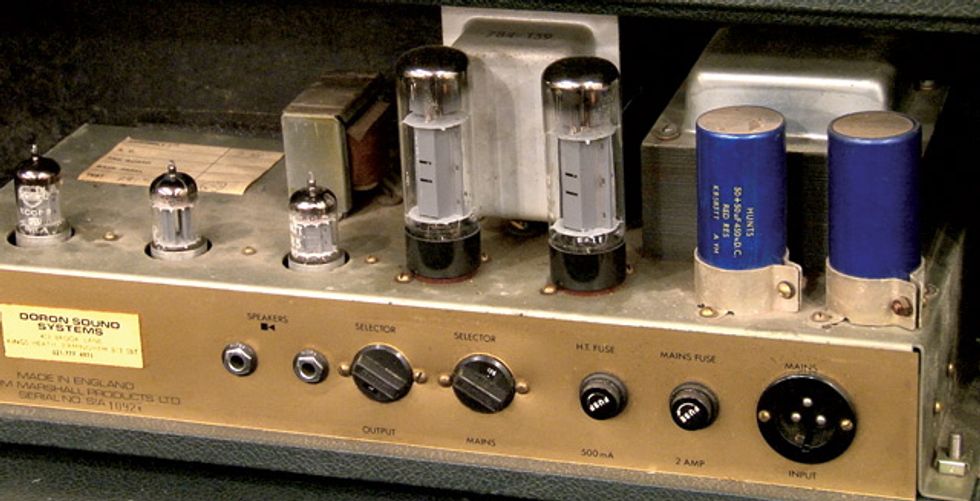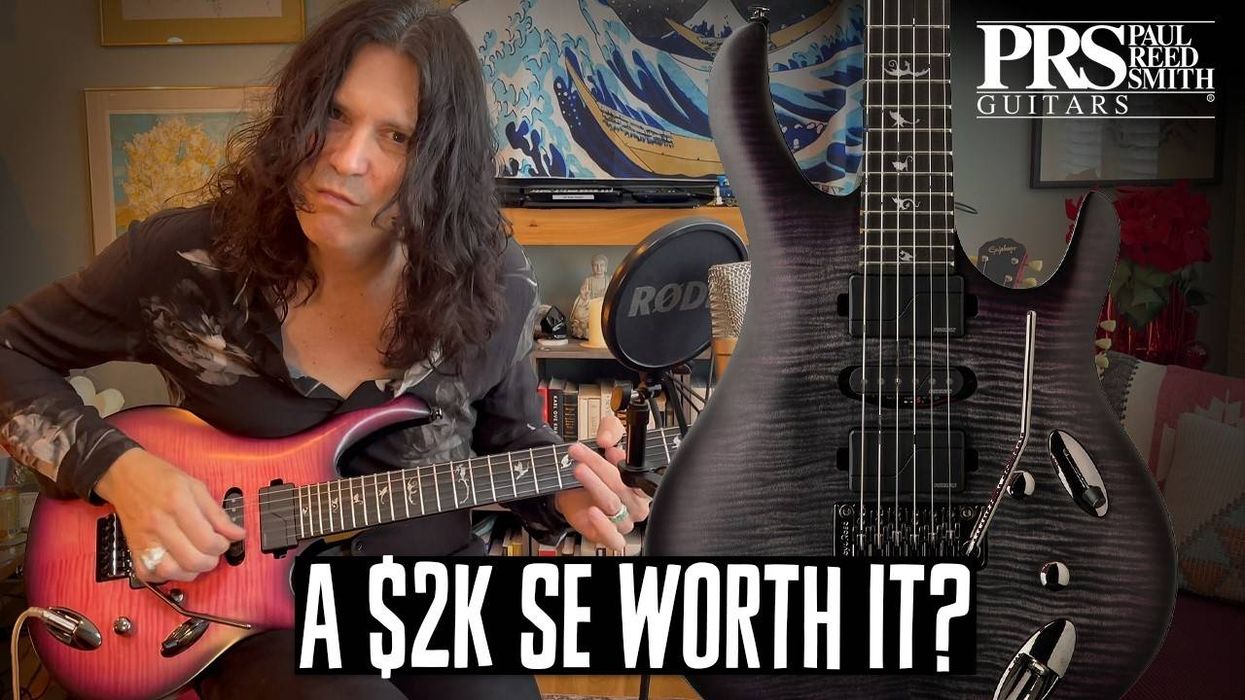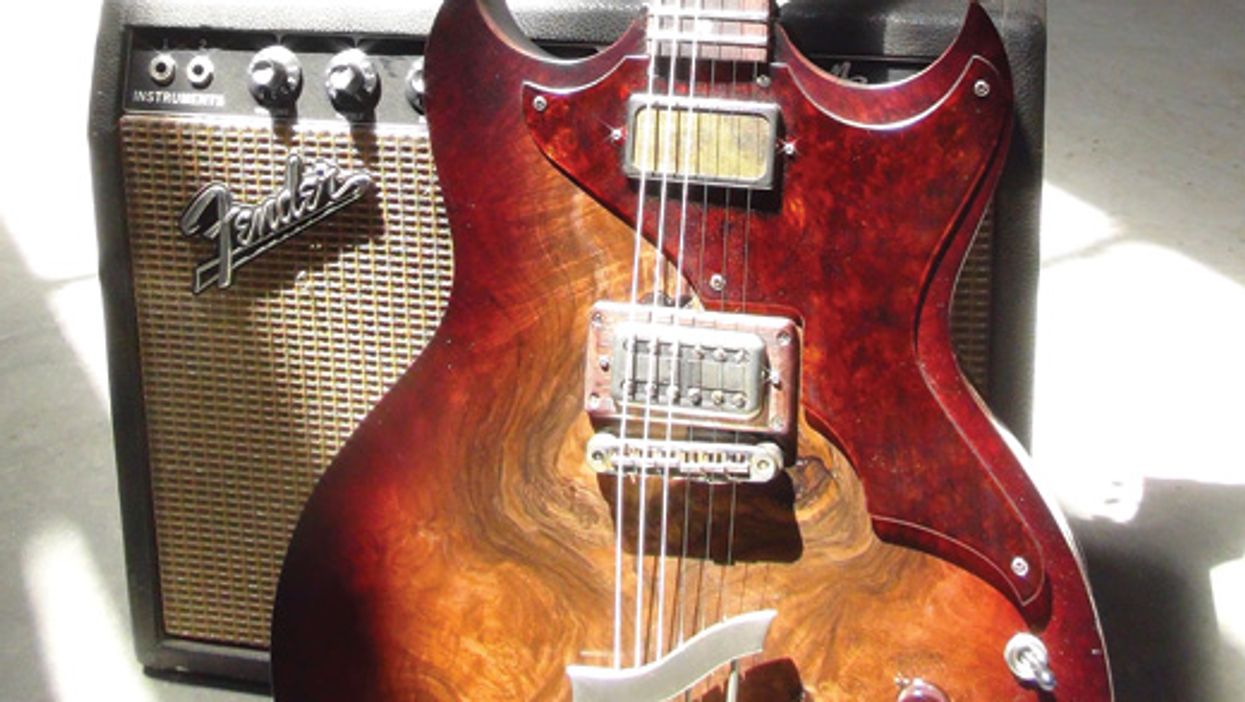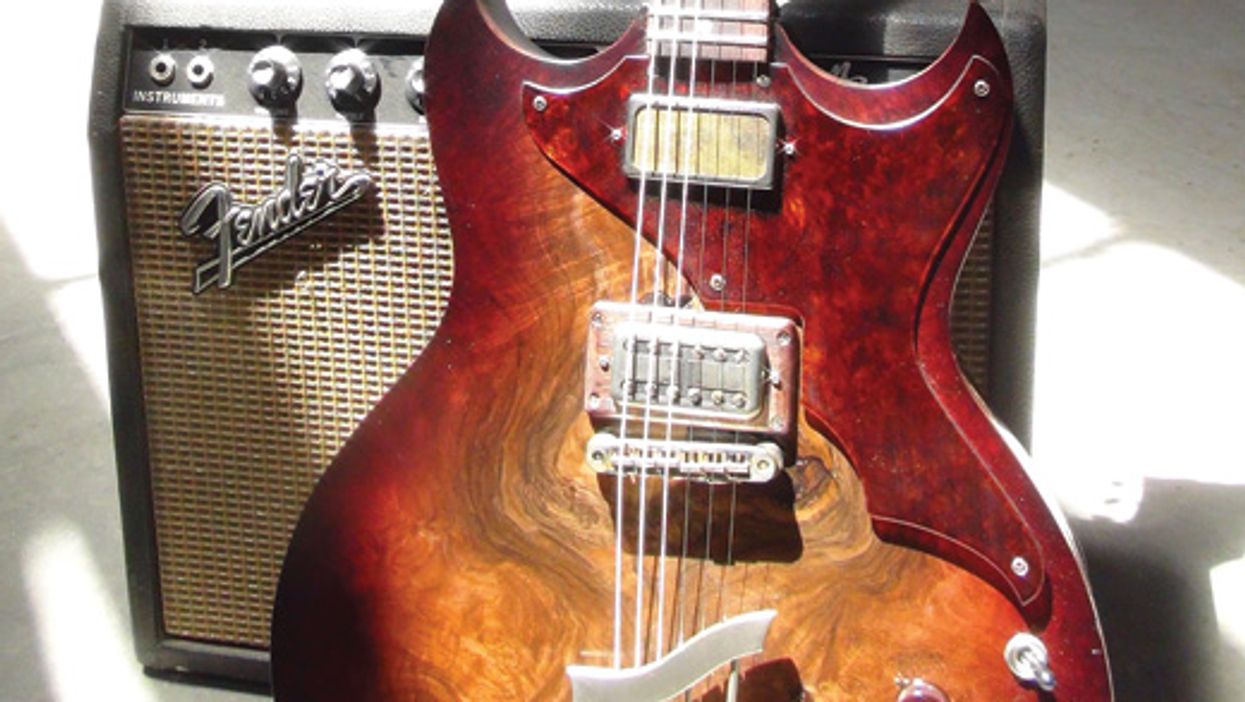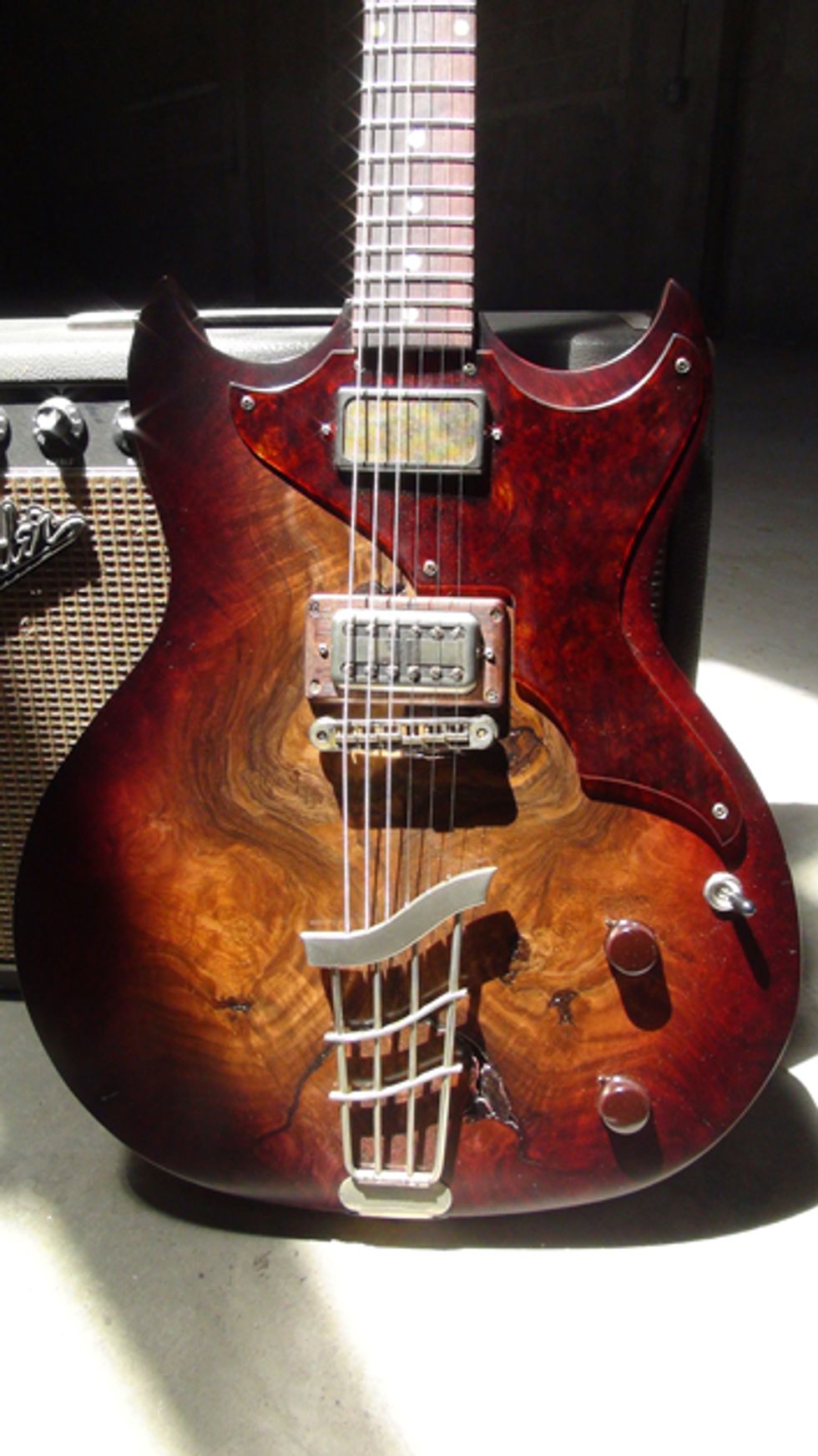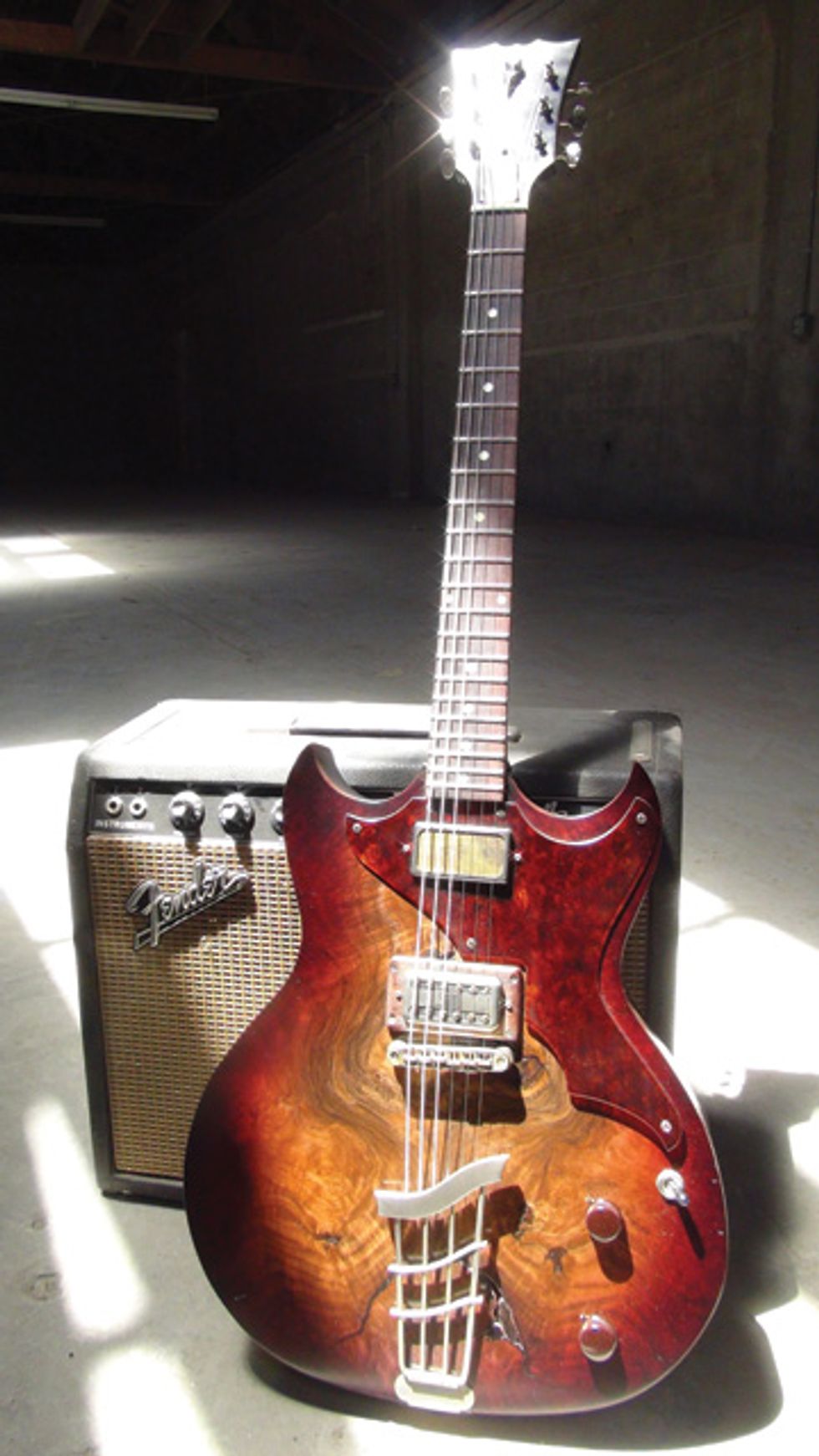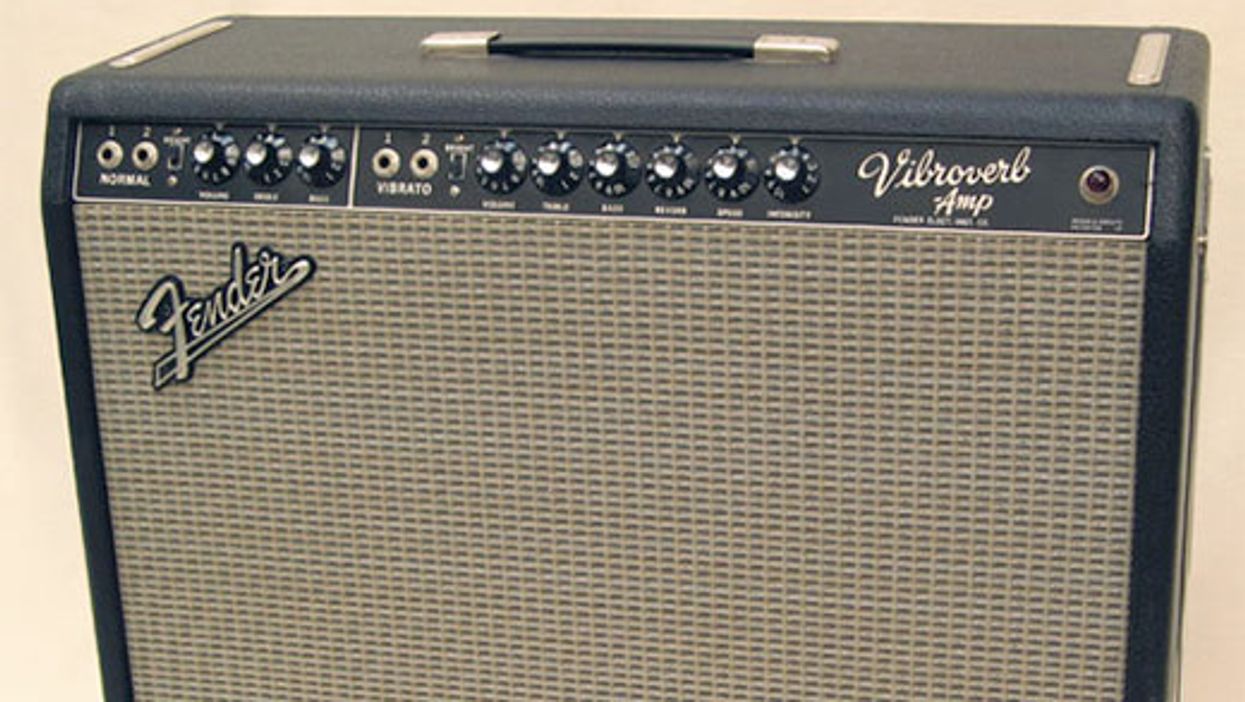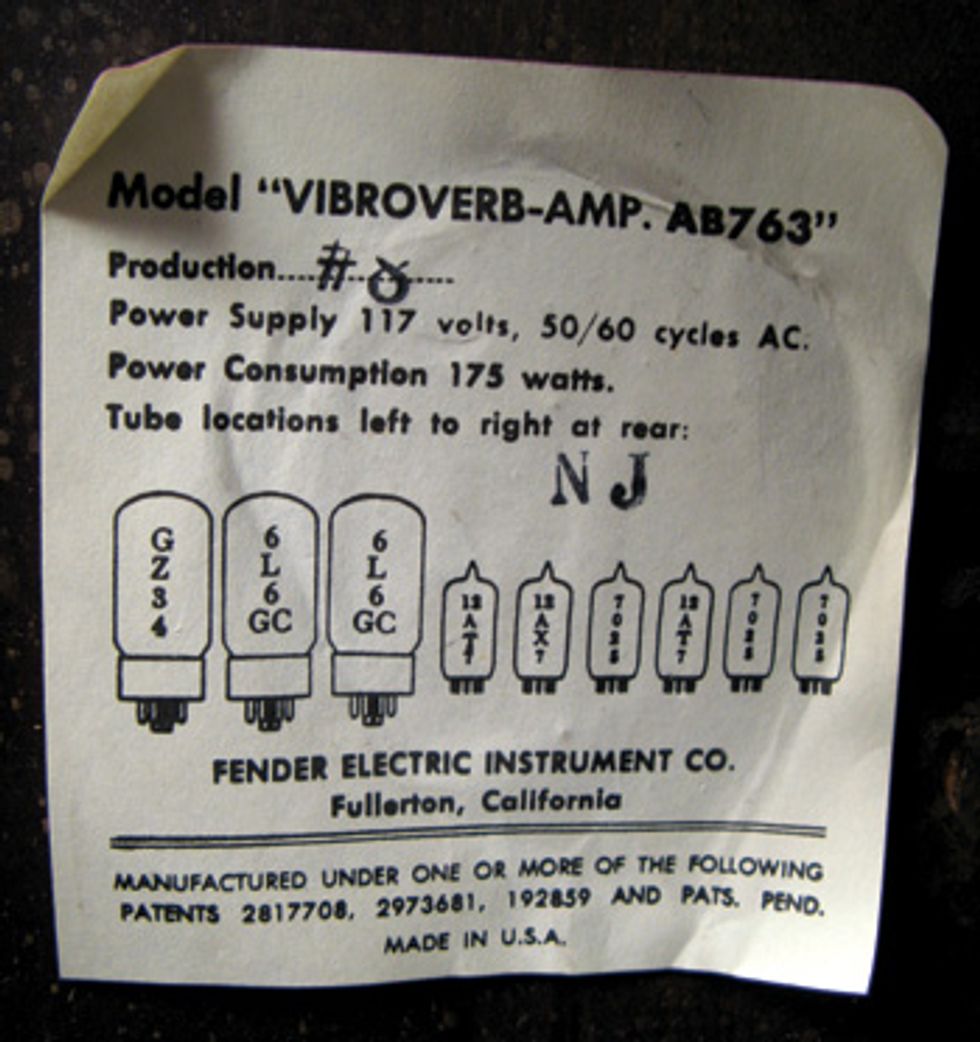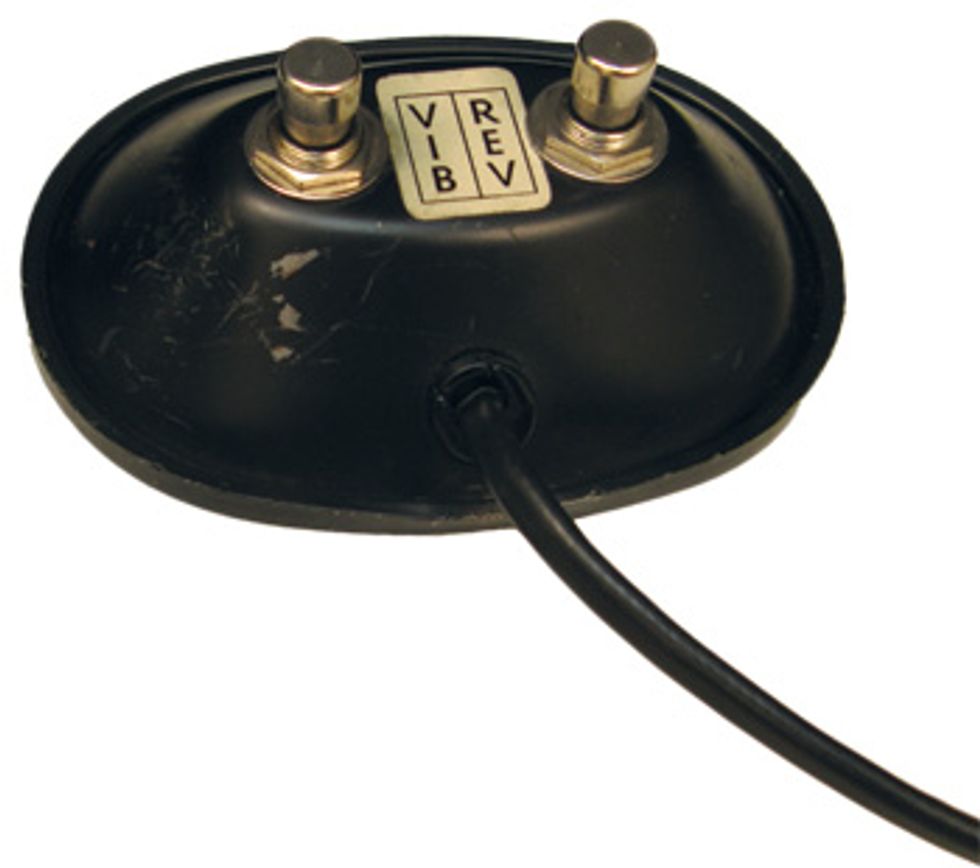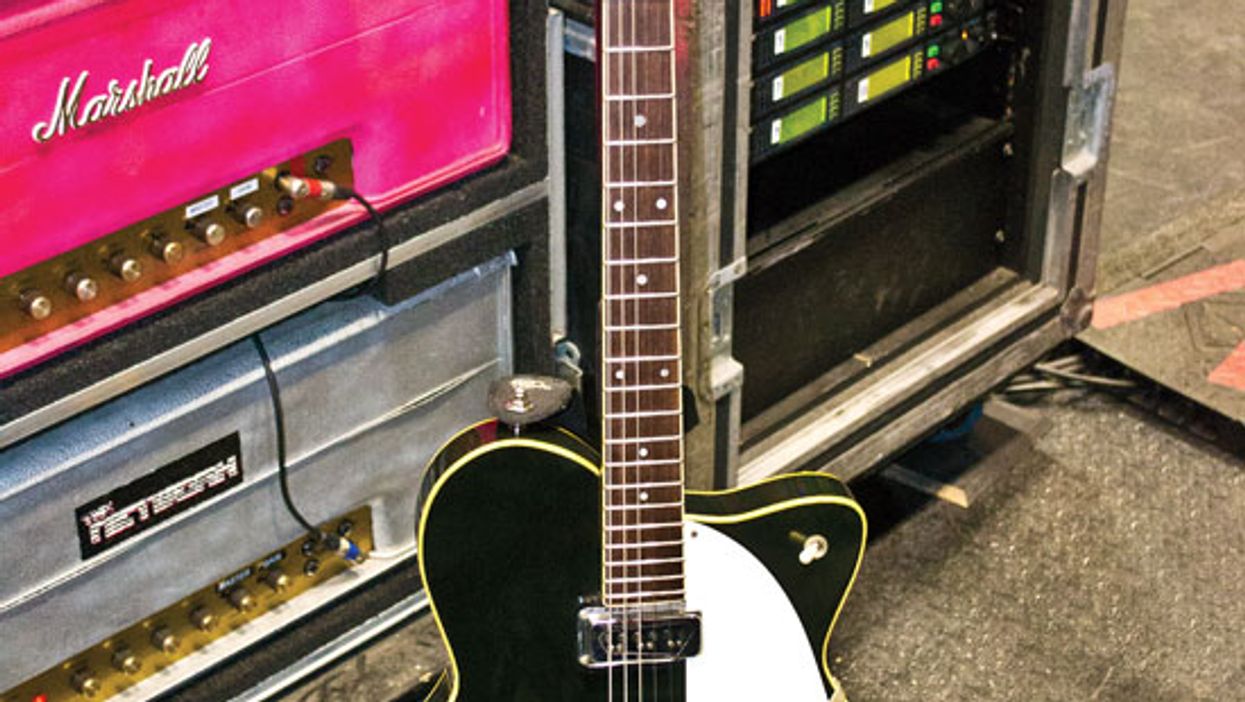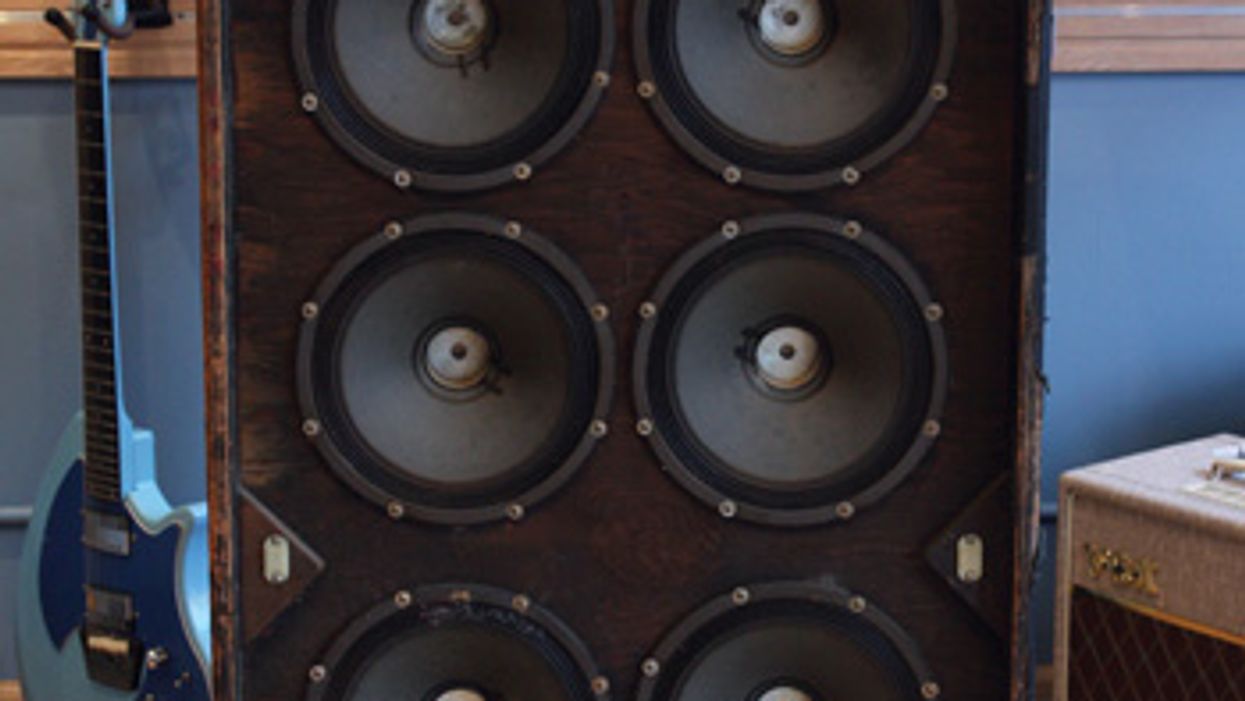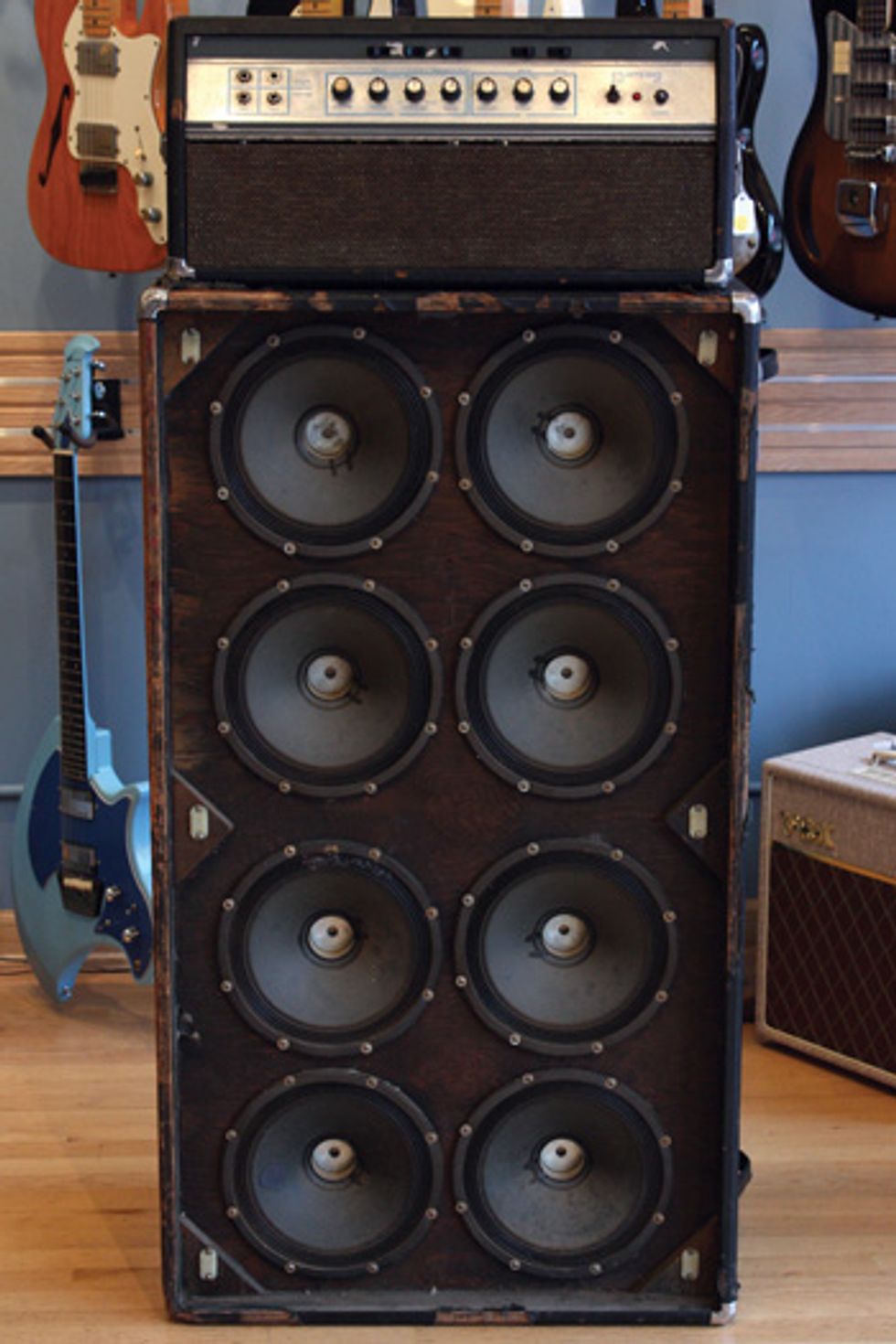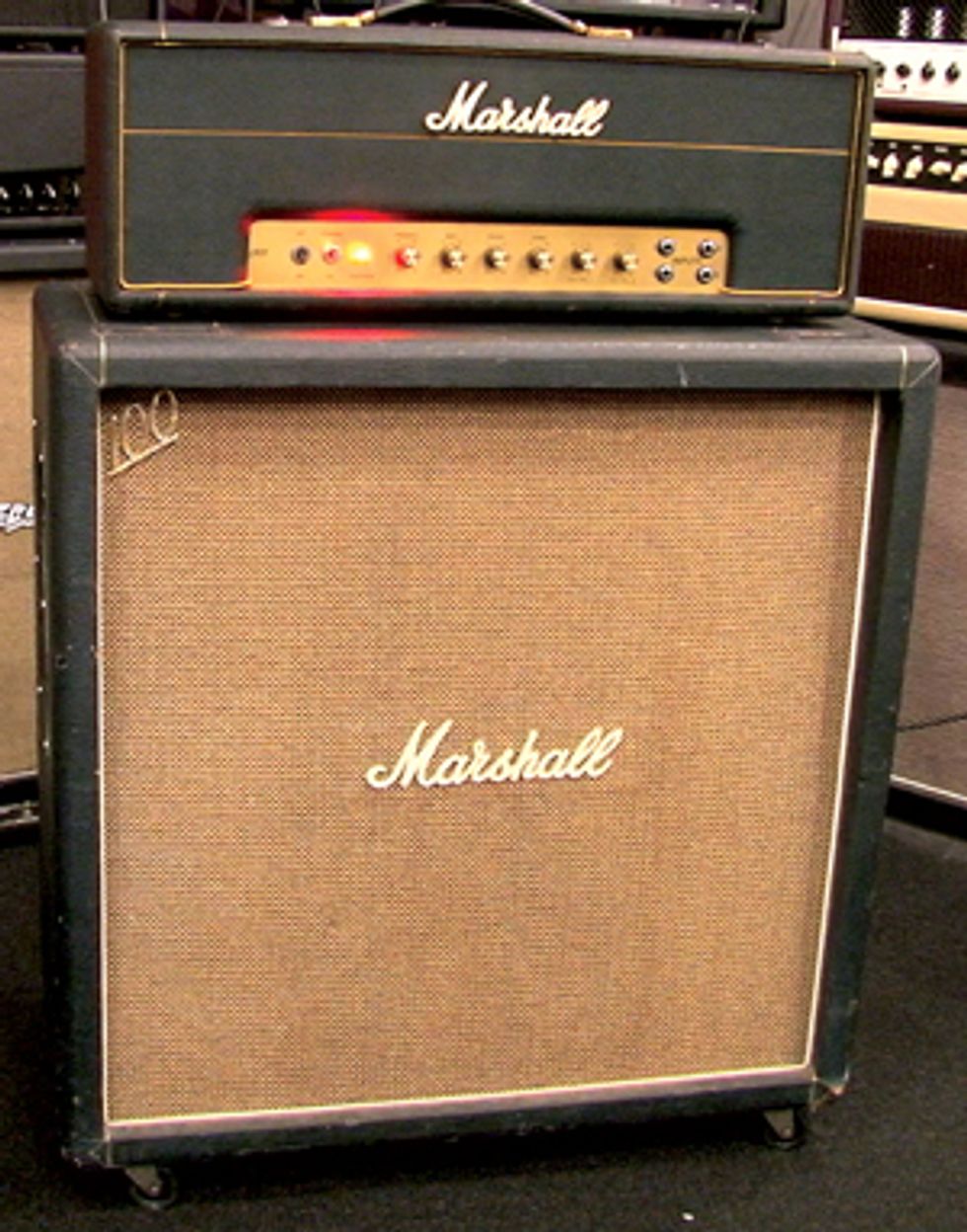
It all started when a drum shop owner couldn’t get rid of three pesky guitarists. If it weren’t for those meddling kids and their gosh-darned guitars, Jim Marshall might have made a name for himself selling drums. The pesky guitarists in question—Ritchie Blackmore, Big Jim Sullivan [the subject of PG’s February 2013 Forgotten Heroes feature], and Pete Townshend—were dissatisfied with their rigs. They yearned for more volume, more distortion, and the right sound. Marshall’s success in addressing those needs sealed the Lord of Loud’s legacy and forever changed the world of guitars and music.
In the early 1960s, after deciding to build handwired amps that rivaled Fender’s current stock, Marshall and his two closest cohorts—Ken Bran, a shop repairman, and Dudley Craven, an 18-year-old apprentice—began building Fender amp clones that used 5881 power tubes. Other small changes included Celestion 15-watt speakers compared to Fender’s preference for Jensen 15-watt models. After working with higher-gain preamp tubes—like the ECC83—and learning how different filters and capacitors had a transformative impact on the tone, Marshall heard a sound he knew guitarists would crave. Thus was born the iconic JTM45—which got its initials from Marshall’s son Jim Terry Marshall. A few years later, Marshall switched to KT66 tubes to create the even louder 100-watt Super Lead 1959. In 1968, the company dialed back the decibels with the unveiling of a 50-watt, small-box head that would be called the JMP—an acronym for “Jim Marshall Products.”
“What really makes this ’68 JMP unique among its brethren is that it was built in early 1968 and was one of two early prototypes that the company used to tweak things making the amp more efficient to build and still keeping it handwired,” says Gene Sinigalliano, owner of Ultra Sound Studios and Amp Sales. “Since the amplifier was a prototype, it is very likely that Jim Marshall or one of his top guys actually labored and constructed this specific plexi.” According to Sinigalliano, this particular Marshall model was an original design—a departure from the company’s first Fender Bassman-based amplifiers. Some of the long-lasting design shifts away from Marshall’s original recipe were the use of EL34 power tubes, a solid-state rectifier tube for more gain, and two separate channels— bright and normal. Guitarists such as Jimmy Page, Jimi Hendrix, and countless others would eventually blend the two channels to get some of the most iconic guitar tones of all time.
“This particular plexi has Mullard EL34s, Mullard 12AX7s in the input, Amperex Bugle Boy and Mini Watt ECC83s,” says Sinigalliano. “All these tubes are similar to what was originally installed in this amp.” The 1968 straight-front 4x12 has Celestion pre-Rola G12-30 speakers with 041 cones, as well as its original basket-weave grille.
Aesthetically, 1968 marked the first year Marshall switched to using white-script logos instead of gold lettering. That year also marked the first time front panels bore the JMP (rather than JTM) designation. Further, ’68 saw one more Marshall evolution— the complete switchover from fret cloth to the basket-weave cab covering that had been partially instituted in late 1967.
A special thanks to Gene Sinigalliano and Ultra Sound Studios and Amp Sales for the opportunity to feature these fine pieces of gear and the story.
Watch the amp in action:

